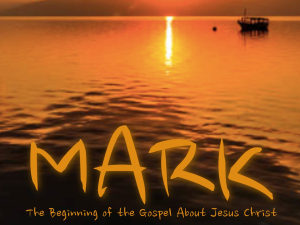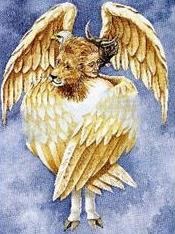
In today’s post I am going to begin discussing the symbolic meaning between the mythological story of Prometheus and some of our Biblical characters and events. While they seem quite different, I hope to show you this is only because they have been misunderstood in their exoteric, or outward interpretations. However, esoterically they reveal the same divine truth about the nature of the human experience. Of course religious doctrine refuses such an interpretation, but this reveals the very limited thought of religious doctrine itself. I’ll let you be the judge after the article, and I hope to hear your opinions in the comment section when this series is finished.
This series will be long and quite in depth in esoteric concepts. I will have to do this in order to lay the proper foundation. So we will begin by discussing many Biblical concepts before we get to our story of Prometheus later on in the series, but if you are patient with me I believe the work of reading and carefully dissecting will be worth it for you. This post will focus specifically on the idea of the logos, with the following post more focused on the story of Prometheus alongside some of the Biblical characters. Ultimately, we are going to end up unveiling the correlation between Christ and Prometheus as the logos, or the personification of God’s wisdom through emenation (creation) as divine thought. We will explore many other themes, such as reincarnation in both the Prometheus story (where it is clearly indicated) and the Bible (where it is hinted).
As a side note, I want to propose a little riddle for you before I begin this post. The answer will be revealed at the end of this series, where I hope you will experience an “aha” moment that will connect with all of the information below. Here’s the riddle:
Can an omnipotent being (God) create a rock that would be too heavy for even him to lift?
Have fun with the riddle. That’s what it’s meant for. It’s an old riddle, but don’t look it up if you aren’t familiar with it. Just let your mind contemplate it. Feel free to comment below before I reveal the answer that is connected to the information presented below and throughout the series 🙂
What is the Logos?
In Greek, the word logos carries the idea of reason and speech, and while this is true, it is only its lower meaning. It’s higher meaning is the divine outpouring of life (spirit) in form (matter) through man’s (and the universe’s) spiritual evolutionary journey. In its lower sense, it manifests in man as desire, intellect, and action upon impulse. In it’s higher sense, it expresses true free will, wisdom, and action through love.
The first chapter of the John’s Gospel poetically states:
“In him was life; and the life was the light of men” (John 1:4).
The logos, or this “life / light,” is the creative energy and expression of motion and life throughout all the cosmos. The writer of Acts, in quoting a poem written by an Athenian to Zeus, has Paul state about this about Christ:
“For in him we live, and move, and have our being; as certain of your own poets have said, for we are also his offspring” (Acts 17:28).
This reflects Paul’s assertion that the logos is not limited to one being, but that all humans have their life, their movement, and their very being itself because we are all the offspring of the logos.
Although the history of the word logos from its first use by Heraclitus around 500 B.C. is confused by much scholarly opinion, it can be simplified by quoting Blavatsky:
[The logos is] “The manifested deity with every nation and people; the outward expression, or the cause of the effect which is ever concealed.”
Now we can understand why the Apostle Paul chose to quote a pagan Greek poet who dedicated an idea of the logos to Zues to explain his concept of Jesus Christ to the Athenians; he was giving them a philosophical concept they would already be familiar with. We can imagine this scene where Paul speaks from Mars Hill to the Athenians to introduce them to his idea of Christ Jesus, the personification of the logos in man in its fullness of potential, as something they themselves could express, not just build statues to as an ideal to worship. They, too, had the ability to express a higher principle within them. Paul further reflects this in Colossians 1:26-27:
“Even the mystery which has been hidden from ages and from generations, but now is made manifest to his saints: To whom God would make known what is the riches of this mystery among the gentiles; which is CHRIST IN YOU, you’re hope of glory.”
I purposely capitalize the important part of that sentence. The Athenians sought God outwardly, but Paul sends them inwardly, where Jesus stated the Kingdom of God is (Luke 17:21).
And what is this mystery, this hidden knowledge? It is that Christ Jesus, the potential expression of the logos, can be made manifest through man from the inside out, rather than worship God from the outside in. It has been hidden from the intellect, but has been the very source (unknown to most) that it is the very source of the intellect and mind itself, as well as the body, soul, and every part and parcel of the cosmos, whether the physical and visible plane of materiality, or the invisible aspects of reality.
Returning to Blavatsky’s statement, when she states that the logos is the manifested deity with every nation and people, she is hinting at the fact that this is true in it’s exoteric expression, as when she states, “the outward expression” through mythology and religious culture. But like Paul, she tells us its true meaning, and even expands upon it as in her concept of the three logoi (as in the trinity) as being:
“…the personified symbols of three stages of spiritual evolution.”
Now let’s expound upon this idea of the logos a little more. Let’s get to the real heart and soul of it, it’s all encompassing ONE feature. Although the writer of the Gospel of John, and many other Greek philosophers chose to write about the logos in its positive aspects as identified through deity such as the philosophical concept of Christ, we have to understand that it is the life animating principle which can also reveal itself to what we as humans might consider as negative, or evil. Consider Isaiah’s statement:
“I form the light, and create darkness: I make peace, and create evil: I the LORD do all these things” (Isaiah 45:7).
The hebrew word for “evil” might better be interpreted as calamity, or adversity. What the author is telling us is that the one animating principle unfolds in manifestation through polar opposites of spirit and matter. This doesn’t mean that a conscious being created evil. It means that the animating principle of all life, depending on the vessel of its expression, can be the cause of adversity, calamity, or even that which we humans consider to be “evil.” In the greater picture, the logos expresses itself in different stages of spiritual evolution as shown in the Hebrew scriptures. Does not even the child, being raised by parents, go through stages after birth from selfishness and expressing desire where everything is only about them before they can expand their world view of themselves vs. others? Of course. The development of humanity as a whole does this as well on a much grander scale. And the different characters of the Bible symbolize this spiritual evolution of conscious expression, which will also be shown in the story of Prometheus. For a man or woman who lives by his or her impulses and desires only, such as presented to us by Cain in the Bible, this expression is selfish, separated from God, and is completely personal, egoic, and all about “me.” But it is still the logos which gives the power of expression even to this, although we intellectualize this idea as “evil.” But even Job, who knew God only by the hearing of him, did not come into a personal relationship of KNOWING until he had gone through the calamity and adversity presented to him in the form of an adversary. In the grander scale, pain and suffering is part of this process. This is also why the Apostle James is stated as saying:
“…count it all joy when you fall into divers temptations; knowing this, that the trying of your faith worketh patience. But let patience have her perfect work…” (James 1:1-3).
Evil and peace can be expressed through man, as man has two natures. Perhaps we can simplify it in this way: In the first Adam, the one that is earthy, or of the flesh, it (logos) is expressed through desire, intelligence (reason and intellect), and reactive impulse. But through Jesus Christ, the second Adam, it is expressed through will as opposed to desire, wisdom as opposed to lower intellect, and action as opposed to action from reaction. Thus the expression of the logos can be shown as thus:
Higher nature: will, wisdom, action (the second Adam or Jesus Christ, the higher self manifested ).
Lower nature: desire, intellect, reaction (the first Adam or humankind in the lower nature).
Thus the logos is the source of all life. It is a philosophical concept or principle, not a person or personality in and of itself. As such, when it is expressed through the lower desire nature, this expression is limited, and we can echo this in Paul’s statement as the “natural man.” When it is expressed through the higher nature, such as the man presented to us in the Gospels as Jesus Christ, (the purified man in body and soul), it begins and finishes as the expression of absolute wisdom / love.
This is taught in the Gospel of John when the writer states:
“And the Word (logos) was made flesh, and dwelt among us…” (John 1:14). The Jesus of the Gospels becomes the one who personifies the logos as manifested through the higher self in the body of flesh.
For those who are having trouble with the fact that the logos itself is a power, and not a person, we can easily rectify it with a few other scriptural ideas.
Before the logos became flesh, it was God and was with God. What does this mean? Traditional Christian doctrine teaches that this was the second person of the trinity, who came down spiritually in the body of a man born from a virgin. This idea evolved over time in the early church through many councils of debate and intellectual discourse, and has been explained in a myriad of ways. But besides the very obvious fact that any person or being would be limited in nature by being that “person” or that “being” in the first place (a human attribute that is limited simply because it is a definition of something, and the act of defining something is a limitation in itself), and excludes the idea that the logos is a personal being. The logos is beyond both Being and non-Being, and is neither, something the human intellect cannot truly cognize. Remember, the scripture tells us that no-thing was made that was not made through the logos. That means every “thing” that was made, or created, was done so through the power and emanation of the logos, even man’s lower nature which commits sin, or the act of living in separation from God.
Now we also have to consider the very important scripture that Christ was crucified since the foundation of the world. Again, exoteric religion has taught us that God the Father had the idea in his mind since he created the world that he would send his son at the appointed time in history to die for our sins. But is this idea based on a wrong interpretation of scripture? If everything that was made is only possible through the expression of the logos, then wouldn’t this indicate, quite literally, that the logos was crucified on the physical plane of matter since the first unfoldment of that which is beyond being and non-being came into manifested existence? Even the tiniest fundamental particle of anything that we could call some “thing,” whether at atom or a quark or a vibrating vortex of energy? As it states in the book of Revelation, “…the lamb that was slain from the foundation of the world.”
What does slain from the world’s foundation really mean?
It more accurately means that the logos, pure spirit, inhabited a limited body at the commencement of creation (not just 2,000 years ago), but from spirit’s first emenation into the realm of being. This is the mystery that Paul spoke hidden for ages from everyone but the saints. The true meaning of the saint is one who is in accordance with the divine law of nature, and works in knowledge accordance with it.
I will end this first part here. In the next post we will get into the good stuff, which will show you the uncanny relationships between Prometheus’ story and that of many of the Biblical characters, which is a little mind-blowing if it’s something you haven’t been exposed to, or never thought about before. But in conclusion I would like to mention that the scholar’s translation into English of the Greek term logos is quite a poor translation. It came about from Greek to the Latin translation with the term, “Verbum,” and then from Verbum in the Latin to “Word” in English. This translation process has caused much confusion. The latin word “Verbum” indicates something entirely removed from the original Greek meaning. When the Greeks used the term logos thousands of years ago, they were referring to a principle intelligence (not human intellect) that was the underlying structure and order to the entire cosmos, both unspoken and spoken. Unspoken in the sense that it transcends even human thought, and by spoken that it became manifested, much like a thought in the human mind becomes the word when it is manifested through spoken language from potential to actual. We will discuss more in the next post.
Blessings.




